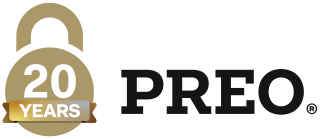Date:
17 Apr 2025
Author:
PREO AG
Green IT
Why recycling used products is vital
If the EU does not want to miss its 2050 climate neutrality target, the transformation of the current largely linear economic system into a circular one must be continuously promoted and driven forward. The EU Commission therefore adopted its first action plan on the circular economy back in December 2015, which was renewed in March 2020 and is currently an important part of the European Green Deal. The action plan targets product design with specific measures, promotes circular economy processes, encourages sustainable consumption, contributes to waste reduction and ensures that resources used remain in the EU economy for as long as possible.
It is crucial to consider the entire product life cycle. This applies primarily to sectors and products that consume the most resources and where the potential for a circular economy is highest. In addition to packaging, plastics, textiles, construction and buildings, food, water and nutrients, these include the electronics and ICT sectors in particular.
In the IT sector, the main levers are resource-saving product designs and extended product lifecycles for software and hardware. In this blog post, we explain why an active circular economy is essential in the EU and how it is being promoted. We also show how companies can make their licence management more sustainable and reduce their corporate carbon footprint by using used software.
For these reasons, an active circular economy in the EU is essential
Whether it's waste prevention, recycling or reducing material dependencies, an active and sustainable circular economy is essential to maintaining a healthier and fairer planet and safeguarding vital resources, as the following figures at EU level show:
Examples of waste reduction and recycling
- In 2020, 131 kg of food waste was produced per capita in the EU. The aim is to halve this figure by 2030. At least 60 per cent of this is to be recycled by 2030.
- In 2020, 178 kg of packaging waste was generated per capita in the EU, almost 20 per cent of which was plastic packaging.
- Between 2010 and 2020, plastic packaging waste increased by 25 per cent. The recycling rate was 38 per cent in 2020 and is set to rise to 55 per cent by 2030. Overall, at least 70 per cent of packaging waste is to be recycled by 2030.
- Currently, less than 12 per cent of all materials used in the EU come from recycled waste. For many special metals and rare earths, such as lithium, gallium and neodymium, the recycling rate at end of life is only around one per cent
- Recycling rates for raw materials used in batteries are 16 per cent for nickel and 22 per cent for cobalt.
Example of reducing dependencies
- In 2021, the EU's dependency on imported materials was just under 23 per cent, 52 per cent for metal ores and around 70 per cent for fossil fuels.
- The EU is 100 per cent dependent on imports from China for refined rare earths and refined magnesium.
The aim is that in future no more than 65 per cent of the EU's annual consumption of each strategic raw material from each relevant processing stage may come from a single non-EU country.
Monitoring shows progress towards a circular economy in the EU
Since May 2023, a new monitoring framework has been visualising progress towards the circular economy, taking into account the links between the circular economy and the EU's climate neutrality target, the zero-pollution target for a healthier and fairer planet, competitiveness, sustainability and securing the supply of materials.
Promoting the circular economy in the EU - examples of taxes or customs duties
In the European Union, trade in used goods is regulated by the so-called margin scheme. This allows resellers to charge VAT only on the difference between the purchase price and the selling price, rather than on the total selling price. This procedure is used in many EU countries and serves to promote trade in used goods and encourage the development of second-hand markets. However, the exact VAT rates vary depending on the country and type of goods. There are also a large number of country-specific special regulations. A detailed overview of the current VAT rates in the individual EU member states can be found on the European Commission's website.
In addition to the margin scheme, some countries offer further measures to promote trade in used goods. For example, duty drawbacks or simplified stock valuation procedures may apply in certain cases. However, the specific regulations also differ from country to country.
Secondary software market: The advantages of used licences for companies
The secondary software market was fully legalised within the EU with the ECJ ruling in 2012 under certain conditions. Since then, more and more IT managers have been discovering the advantages of using used software licences in on-premises operation from year to year. In addition to high licence cost savings of up to 70 percent compared to the latest cloud-based licence, used software is particularly impressive in terms of sustainability, as software neither wears out nor ages. As a result, companies and public administrations benefit from
- The promotion of a sustainable circular economy within software asset management.
- the extension of average hardware utilisation cycles of 4.9 years and the conservation of global resources.
- an active contribution to reducing the company's CO2 footprint.
- documentable measures to fulfil ESG reporting standards as part of the EU-wide CSR directive for sustainable business.
- Proof that green IT is not just an image factor, but can be an important building block on the road to climate neutrality.
Does that sound interesting? The PREO licensing experts will be happy to advise you personally on the benefits of used software licences and prepare a needs-based offer based on your current inventory.
EcoVadis certification and Synesgy Certifikate ESG Score B
As one of the pioneers in the European trade in used software licences, PREO began documenting its sustainability performance in the areas of environmental, social and corporate governance on the basis of ESG reporting standards back in 2023 and had these independently certified by EcoVadis, the world's largest provider of sustainability assessments. PREO received a ‘Committed’ score for the results of the published reporting period from January to December 2022. The score is made up of the performance areas of environment, labour and human rights, ethics and sustainable procurement. This puts PREO in the top 22 per cent of companies assessed by EcoVadis within the software industry.
Based on the documentation, PREO also received the Synesgy Certificate ESG Score B as a company with an equally ‘good’ level of sustainability.
Detailed information on the certifications and planned activities on the path to becoming a climate-neutral company by 2030 can be found here.
PREO's used software is part of the circular economy in the EU
PREO offers companies, organisations and public administrations a large selection of used licences from leading manufacturers such as Microsoft and Adobe at all times. They benefit from
- greater sustainability in the IT sector by promoting an active circular economy and reducing the company's CO2 footprint.
- High savings on ongoing licence costs of up to 70 percent compared to the respective new version.
- 100 per cent legally compliant and audit-proof licence acquisition with maximum transparency in all processing steps, including complete documentation in the PREO licence portal ‘Easy Compliance’.
- Personal advice on all questions relating to licence transactions or the integration of used software licences in traditional network structures or hybrid cloud models.
- existing software licence management capacities for large IT infrastructure projects with thousands of workstations and cross-border locations.
- Expertise from numerous reference projects that PREO has already successfully implemented for well-known companies from various industries and sectors.










